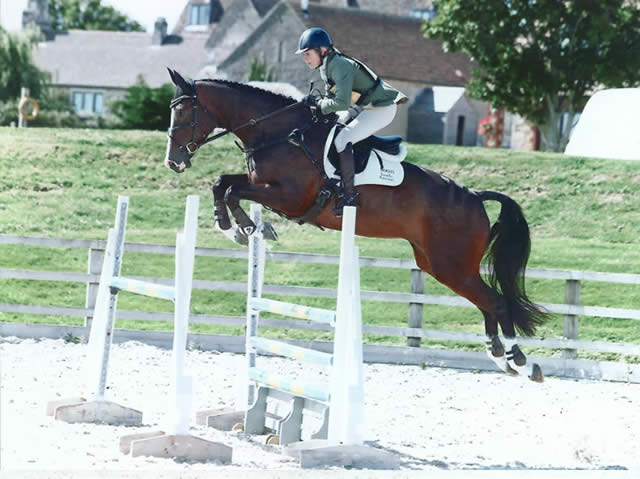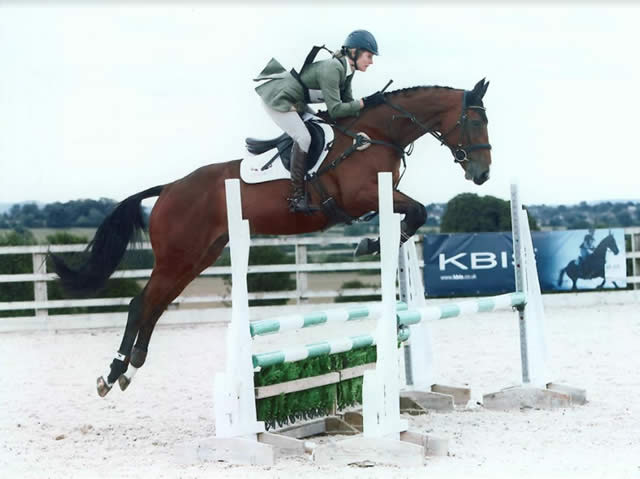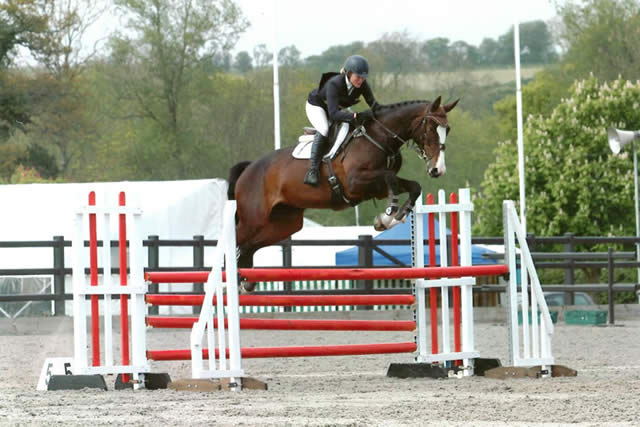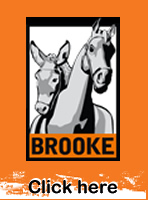
Horseytalk.net Special Interview
Sara Squires
Black Country Saddles sponsored event rider, Sara Squires offers some useful advice on ensuring your horse is responsive and reacts positively, no matter what the situation.
Sharpening Your Horse's Focus

Says Sara Squires:
The essence of success is to train your horse to be careful. This means he must remain focused throughout a competition so he has the ability to react as necessary, thinking on his feet throughout.
I believe that when training your horse to jump, you must introduce lots of variety.
The aim is to keep your horse alert, keep him concentrating and therefore get him to respond to everything he is faced with in a quick but measured way.
You should also take this opportunity to reflect on your own riding. Your horse can feel how comfortable you are in the saddle, and if you are disorganised, this is likely to transfer through to your horse being disorganised which will be reflected in his jump form.
So, firstly consider whether you are sitting comfortably and riding with a positive rhythm. Then reflect on whether you have got control of his shoulder and if he is sitting on his hindleg. Finally, is your horse straight and heading for the middle of the jump?
If you are positive about all these points, you are creating the best opportunity for your horse to jump cleanly.
Once you are comfortable with these points, you should start to work on his reaction times so he has the ability to react quickly while jumping, but is also responsive to your aids on the flat too.
You are aiming to get to a position where you can close your heel and your leg around his sides and that on its own is enough to get him into a forward trot. If this is not immediately achievable work on lots of transitions with your aids as light as possible, if necessary using the tickle of a whip. By getting him to react to the smallest of aids, you are preparing him for far greater levels of reaction when you need them.

Try the following exercises to build on your success:
Exercise One – Slow Down and be Thoughtful
With an upright fence that falls easily, add some V-poles. The V-poles will actually make your horse back off from the jump, thereby encouraging him to think about how to tackle it first.
You need to focus on your horse heading straight forward with a positive rhythm, whilst you maintain a supportive leg.
Exercise Two – Placing his Feet
Create a small upright with canter poles on the take-off and landing side, three metres from the fence. Start with a low fence but be ready to increase the height as your horse's confidence grows.
For this exercise, your horse will have to focus on exactly where he is putting his feet because of the poles, and just as importantly, will have to focus on what he does after he lands.
Once again, your horse will have to slow down his approach, giving him some thinking time as to how to tackle the fence.
Your focus with this exercise should be a straight approach again, maintaining a positive rhythm and encouraging your horse to find his own balance.

Exercise Three – Increasing the Number of Fences
Build three small fences, three metres apart. This will teach your horse to jump and think quickly, and ultimately, you can add as many fences as you like to this exercise.
Again in this exercise, give your horse a good, straight approach and focus on balance. Maintain a neutral upper body position rather than throwing your upper body forward.
These fences require a short, active canter and you should find this naturally with the exercise.
When it comes to jumping this is another easy exercise to incorporate.
Use a line of five canter poles set out seven yards apart with a cross pole at the end. As you make progress the jump can then be made into an upright and then an oxer, increasing the height as required.
This teaches the horse and the rider the correct jumping canter and balance required on the approach to the fence.
The exercise is useful for both young and more experienced horses and I tend to use it once a week with all my horses.
The Vinci Jump
The choice of saddle that Sara uses for both show jumping and cross country is the Black Country Saddle Vinici Jump.
Said Sara: "The saddles include the latest innovations in design and this really gives me confidence knowing that whether I am competing at a show jumping event or tackling a major cross-country course that I am riding in the best saddles available today.
"The saddles are just fantastic and as soon as you sit in one they are so comfortable, the leather is soft and supple from day one".
For more information contact Black Country Saddles on 01543 578 243 or visit www.blackcountrysaddles.com



